KIWIFRUIT IN THE BAY
The Kiwifruit sector bounced back big time after Psa and for some years has been a crucial part of the Bay’s economy. We look at Covid-19’s key impacts, especially on employment.


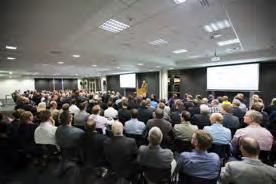








The Kiwifruit sector bounced back big time after Psa and for some years has been a crucial part of the Bay’s economy. We look at Covid-19’s key impacts, especially on employment.










By RICHARD RENNIE
The past season had a 14,400 cap on RSE workers coming into New Zealand from the Pacific Islands, of which about 2200 were destined for Bay of Plenty kiwifruit sector.
However, the region ended up with 1200 less than expected, and some of the workers that did make it, remain stuck until repatriation flights can return them home.
Nikki Johnson, New Zealand Kiwifruit Growers Incorporated CEO said that at this
stage it was not possible to discuss RSE or working holiday staff numbers for next season, with negotiations continuing with government.
Meanwhile, there were mixed feelings among RSE workers still here about returning home. “There will be a number who will want to stay, and some who want to go,” said Johnson.
“But there are no imminent flights on the horizon for Vanuatu, although there may be a NZ Defence Force repatriation flight planned.”
The government has ex-

[Horticulture








– Mike Chapman
tended RSE working visas until late October and waived the five-month stand down between leaving and returning to New Zealand for the new season. About half the country’s RSE workers are deployed in the apple and pear sector, while kiwifruit and viticulture account for the remainder in almost equal numbers.
Work for those remaining
Meanwhile, the challenge for the several hundred RSE workers still estimated to be in the Bay of Plenty was to pro-




vide work for them, something Johnson said was not too great an issue. On average, RSE workers who return to New Zealand after earlier experience can expect to earn a premium over first timers, with returnees averaging $20.61 an hour, compared to $18.87 for first timers. The highest paying skills are winter pruning, where an experienced pruner on an hourly rate can expect to average $22.24, comparable to a permanent local, who earns
www.bopbusinessnews.co.nz
PUBLISHER
Alan Neben
Ph: (07) 838 1333 Mob: 021 733 536
Email: alan@bopbusinessnews.co.nz
EDITOR
David Porter
Mob: 021 884 858
Email: david@bopbusinessnews.co.nz
PRODUCTION
Copy/Proofs/Graphic Design
Times Media – Clare McGillivray
Ph: (09) 271 8067
Email: clare@times.co.nz
BUSINESS DIRECTOR
Pete Wales
Mob: 022 495 9248
Email: pete@bopbusinessnews.co.nz
EDITORIAL:
News releases/Photos/Letters: david@bopbusinessnews.co.nz
GENERAL INQUIRIES: info@bopbusinessnews.co.nz
Bay of Plenty Business News has a circulation of 8000, distributed throughout Bay of Plenty between Waihi and Opotiki including Rotorua and Taupo, and to a subscription base. www.bopbusinessnews.co.nz
Bay of Plenty Business Publications 210/424 Maunganui Road, Mount Maunganui, 3116
Bay of Plenty Business Publications specialises in business publishing, advertising, design and print media services.
As I have commented before in this space, the next election may be much closer than the Labour landside that many commentators have been predicting.
We should remember that this election is not just a judgement on the next government’s ability to help us survive a pandemic.
As examples around the world have demonstrated, relatively few governments worldwide would claim that they have nailed this pandemic. We have done better than many –aided by our small population size and relative isolation.
But the election will ultimately be decided on the per-
But the current governing coalition was the first in MMP history where the most popular party was not part of the Government.
No-one should ever write off Winston Peters before polling day, but he is currently flagging in the polls.
And he appears to be aggressively distancing himself from the government that made him foreign minister and as part of its deal provided a $3 billion Provincial Growth Fund for NZ First MP Shane Jones to dispense.
The fund was recently the subject of pointed questions from the auditor-general as to whether it was fulfilling its
a strong lineup of ministers and bank benchers.
The problem the prime minister – and other world leaders – face now is, unfortunately, the same as at the beginning of the year. While it is relatively simple to lock down an economy, it is extremely hard to get it up and running again.
Yes, large sums of money have been thrown at the economy in terms of wage subsidies, which have been much appreciated and indeed have helped many businesses to survive.
The National Party has certainly had its problems in recent months, but it seems to be settling down under new leader Judith Collins. But there

Hundreds
ceived competence of the contending parties in developing and executing policy.
It is sometimes overlooked that the current government is not a Labour Government – although it is increasingly presented as such by its leaders –but a coalition government put into power with the Greens by the intervention of New Zealand First leader Winston Peters. It is not unusual in being a coalition.
Prior to the last election National had governed since 2008 in a minority government with confidence and supply arrangements with ACT, Maori and United Future.
stated aim of permanent job creation.
The prime minister scores very highly with New Zealanders in the empathy stakes and has risen very well to such major national disasters as the appalling mosque killings, the White Island eruption and indeed the onset of the current pandemic meltdown.
But until Covid-19 blighted the country, the current government was not regarded by everyone – and certainly not generally in the business community – as being notably competent. Nor, with a few honourable and now overworked exceptions, did it have
is a sense – at least when this article was written – that the wheels on the prime minister’s bus have become just a little more wobbly.
Her public polling remains unimpacted. However, troubling examples of incompetence have begun to surface.
The premise of the lockdown approach was the government’s assertion that, by all means be careful, but the public didn’t need to worry because “we’ve got this”.
The reality is that they hadn’t. Yes, the government had issued instructions that testing of key workers had to happen to secure our vulnerable international borders –but it didn’t happen. And that wasn’t noticed or followed up by the government until the media brought the problems to its attention.
The recent re-imposition of the partial lockdown has naturally unnerved the public. It was of course always unrealistic to hope that there would be no new Covid-19 surges. But at the very least, the electorate

needed to be able to believe that what the government said it had done, was actually the case. Never mind international border control issues, the government has apparently even had problems policing the border between Auckland and the rest of the country in the latest lockdown. Hundreds of complaints have emerged from residents, workers and farmers who have been unable to move legally around because of inconsistencies about where Level 3 areas merge with those in Level 2.
A report this month by the Rutherford consultancy, based on its most recent survey, suggested negative sentiment about the government was up 10 percent, and toxic social media comment was rising as people vented frustration at the re-imposition of restrictions.
The prime minister’s inclusion of senior government bureaucrats in a Labour Party video, which skirted electoral restrictions if not actually breaking them – was also a bad look. The video was quickly taken down and changed after opposition complaints, essentially an admission that it was a mistake.
Credibility is hard won and easily lost. There are bound to be more problems for any government dealing with Covid19. But what we need is an efficient, coordinated system that allows us to go about our business safely, with consistent across the board application of restrictions, and minimum disruption to the businesses struggling to stay alive.
The well-worn phrase “a week is a long time in politics” is usually attributed to the late British prime minister Harold Wilson, though it remains unclear whether he was actually the first to say it.
But it is, like all clichés, a truism. It might be even more appropriate to recall the words of British Liberal politician Joseph Chamberlain, who is recorded in 1886 as having said: ‘In politics, there is no use in looking beyond the next fortnight.”
$22.30 an hour for the same job.
However, relocating some of the remaining 7000 from the rest of New Zealand to undertake work here in the Bay was challenging when they were not sure if they would be leaving New Zealand or not.
“The next main peak for work is summer, and we will be working to draw in more New Zealanders. At present the unemployment rates do not give us much to work with, and we do not know what will happen when the wage subsidy comes off.”
The winter pruning season is nearing its conclusion and initial fears a shortage of RSE workers would impede progress has faded as the industry had rallied together as spring nears. A $250,000 government grant to train more pruners yielded 25 locals for the first training intake.
Johnson said the kiwifruit sector has done a good job of boosting the number of local workers in the segment, with about 50 percent of seasonal jobs going to them – about 8000 people.
She said a concerted effort in the past two years to focus more upon locals to meet seasonal demand has met with good success, and would continue with renewed focus for the next harvest season.
Holiday working visa holders usually provide 2000 staff for the kiwifruit season, and are invaluable for their preparedness to move around, something that may not be as practical for New Zealand workers living outside the Bay of Plenty.
It is estimated there are 21,000 working holiday visa holders in New Zealand.
Mike Chapman, chief executive for Horticulture NZ said the organisation was in active discussions with government about getting greater flexibility on visa renewals, for both RSE and holiday visa workers.
Over 13,000 people have signed a petition calling for an extension to the six-month working visa, which government initially extended for such workers to September 25.
However, for many getting home by then is looking less likely, and for others the prospect of staying in New Zealand and continuing to work is more appealing.
Chapman acknowledged there had been little contact to date with new immigration minister Kris Faafoi.
He said the industry had been pushing to have the RSE worker cap for the new season lifted to 16,000 from its present 14,400 to help meet growing demand from apples and
The next main peak for work is summer, and we will be working to draw in more New Zealanders. At present the unemployment rates do not give us much to work with, and we do not know what will happen when the wage subsidy comes off.” – Nikki Johnson

kiwifruit for more labour.
Richard Bibby, chairman of the Masters Contractors Association that manages seasonal staff, said the silver lining out of Covid has been the RSE workers who are still here, given how uncertain it was about getting any more back for the new season.
Uncertainty over visa extensions remains the single biggest concern, and one he hoped the new minister for immigration would sort soon.

The strong surge in kiwifruit volumes in coming years is bringing a need for more capital to be invested in the post-harvest sector and new ways of financing it.
By RICHARD RENNIE
ARabobank report estimates the sector will need an investment injection of $750 million within three years to cope with a near doubling in fruit volume between now and then.
Zespri chief financial officer Richard Hopkins said the marketer’s five-year out-
look document identifying challenges and opportunities is provided regularly to the industry.
The 2020 season processed 155 million trays. Much of the surge in volume has come from the growth in SunGold plantings, totalling 700 new ha per year.
The fruit is also proving to be a heavy cropping variety, capable of generating
over 15,000 trays a ha. Rabobank senior horticultural analyst Hayden Higgins said the main sources for that investment would be debt and shareholder equity, and he was encouraged by the healthy balance sheets most post-harvest processors had to help fund the expansion.
Continued on page 6
Apata chief executive Stu Weston said Rabobank’s estimates were accurate, and the burden of expansion was shared by all processors.
Apata processes about 12 percent of total fruit harvested.
Weston said calculating growth in fruit was a relatively straightforward mathematical equation, compared to estimating volume growth in some other primary sectors, such as dairy production.
“This is particularly the case with SunGold – it has less winter chill reliance and pollinates well, and it is easy to see five years out where we will be.”
On average, every additional 750ha of new licenced land sold by Zespri results in an increase of 10-12 million trays of SunGold fruit.

While debt was the easiest source of finance for the sector it was not a bottomless pit, said Weston.
He noted a conflict between orchardists who may be prepared to put money into the sector to expand infrastructure, and those who may not.
“Those larger younger growers would like to, but already have committed to

The sensible thing is for growers to own the post-harvest processing as they do the marketer, and I expect the majority of investment will come from growers. They won’t be that keen to give it to outside interests.” – Stu Weston
investment in their orchards, while the older mum and dad investors have the funds, but don’t want to at that stage of their life.”
However, all orchardists had one thing in common and that was a reluctance to see an injection of external capital from large outside shareholders. “The sensible thing is for growers to own the post-harvest processing as they do the marketer, and I expect the ma-
jority of investment will come from growers,” said Weston.
“They won’t be that keen to give it to outside interests.”
One solution could be for post-harvest companies to have one class of share open to all investors, both growers and non-growers, with processors charging a higher service fee for processing fruit.
The additional revenue would feed through to higher dividends, encouraging more
share purchases and with that more capital available for expansion.
“There is no free lunch, the service pricing on processing will have to become higher.”
The Rabobank report maintains that in theory growers could fund the entire $750 million, an amount Weston said was not unsurmountable when compared to the capital value of orchards.
But Rabobank estimates the post-harvest sector will probably need to source about a third, or $250 million as equity funding.
“But by hook or by crook, the fruit cannot be left on the vine and we have to figure out a way to fund the expansion that all post-harvest operators face,” said Weston.


By RICHARD RENNIE
Te Wahi Ao, a Te Awanui
Huka Pak subsidiary, has signed a partnership with Waikato biotech firm Ligar to provide waste-stream organic material from its kiwifruit and avocado operations as a source for molecule extraction.
Bioactives are specific molecules extracted from organic matter for specific purposes, which can be for their taste profiles, nutraceutical value and nutritional value.
The molecules were often higher in the skin of fruit, something frequently otherwise disposed of with no value extracted.
The global bioactives industry has been identified as having a value of US$51 bil-
A refinery to distill high value bioactive molecules will be built in Bay of Plenty in conjunction with iwiowned Te Awanui Huka Pak to capitalise on a rapidly growing segment of the food ingredients industry.

lion by 2024 and knowledge about the molecule’s potential is expanding rapidly. Recent
examples include utilising bioactives extracted from hemp cannabis plants in replenishment drinks.
The technology developed by Ligar enables greater volumes of the molecules to be extracted, helping lower the cost of what has typically been a high cost exercise yielding low volumes of molecular product.
Te Awanui Huka Pak chief executive Te Horipo Karaitiana said the venture was an excellent opportunity to put iwi at the front of a rapidly developing high value sector, similar to what the company’s early involvement and decision to stick with kiwifruit meant.
With its ready supply of kiwifruit and avocado material,
Te Awanui Huka Pak could see an ample supply of material available, aided by access to
compounds in kiwifruit.
Because of the location to a good waste-stream source on iwi land, he said the Bay of Plenty made good sense as a
This initiative has potential to grow a new generation of great jobs for Maori.” – Te Horipo Karaitiana
material from major post harvest operator Seeka, in which the group has a significant shareholder stake.
Ligar founding chief executive Nigel Slaughter said early stage “bio-prospecting” has already identified some potentially useful organic
location for the refinery.
The company hoped to develop a bio-refinery network around the country, all located in the vicinity of other sources, including vegetable waste in Hawke’s Bay and Gisborne.
The refinery would be the
focus for what Slaughter said would be the world’s first indigenous innovation park. Iwi are also excited by the possibility of employing Ligar’s technology to help extract molecules with a uniquely New Zealand content, utilising native flora that may contain medicinal and nutritional properties.
Karaitiana said the initiative was a perfect fit for the Te Wahi Ao subsidiary as an innovation company, focused on growing revenue by expanding and deepening the impact of horticultural activities, and growing Maori enterprise ability.
“This initiative has potential to grow a new generation of great jobs for Maori,” he said.






The significant growth in Acorn Foundation distributions over the past year to more than $1.7 million has been driven primarily by the resettlements of trusts and an increase in local business support for charitable organisations, says general manager Lori Luke.
By DAVID PORTER
Including the latest contributions, Acorn donors have now cumulatively distributed more than $8.3 million since 2003 to causes in the region. Luke said 157 charitable organisations across New Zealand – with a strong focus in the WBOP – have received grants throughout the year.
Distributions outside the Western Bay of Plenty have been specified in donor wishes.
“These community contributions come from estates, living gifts, trust resettlements, Community Group funds, Giving Circles and Workplace Giving programmes,” said Luke.
“Our team truly appreciates the opportunity to make these distributions on behalf of our donors who have such a big heart for our community. The recipients that have been selected this year provide essential services to our region, and we are delighted that we can help our donors contribute to their efforts.”
This year, the addition of seven Bob and Joy Owens Scholarships that have moved to Acorn via the resettlement of the Owens Charitable Trust and two new scholarships for
has received over $43,000 from the Karen Pensabene Fund, and Waipuna Hospice, which has received more than $104,000 from the contributions of 11 different donor funds. With local charitable organisations impacted by the effects of Covid-19, both from a reduction in funding available and in an increase in service demand, Acorn say they appreciate donors more than than ever.
also a number of other ways that their donors support the community. Craigs Investment Partners donated $150,000 last Christmas, which Acorn distributed to organisations across New Zealand on their behalf, and Craigs, KPMG and BOP Regional Council have all es-
With such a strong increase in distributions relative to a year ago, we know that the Acorn Foundation is making a significant difference to the lives of people here in the Western Bay of Plenty.” – Lesley Jensen
tablished Workplace Giving programmes for their staff.
The Acorn Foundation recently announced a record $1.75M in distributions for the past year, up more than 50% over the previous year.
With the Acorn fund reaching $36.4M more individuals, trusts, community groups and businesses have played a role in supporting the Western Bay of Plenty community than ever before. Although Acorn is well-known as the organisation where you can leave a gift in a Will, there is no one-size fits all when it comes to supporting our region. Additional ways to contribute include:
• Corporate Funds
• Workplace Giving via employee payroll donations
• Regular giving to a favourite cause in one of the many Community Group Funds
• Giving Circles that bring together a group of friends or colleagues to give collectively
• TECT rebate donations to the Acorn Vital Impact Fund, distributing to organisations who work locally in the areas of greatest need
• Trust resettlements of family or community trusts
Several local businesses and councils are involved in giving back to the community through Acorn. Craigs Investment Partners gives nationally to communities in which it maintains

offices through Acorn, while the KPMG Tauranga office has both a Corporate Fund for perpetuity and is involved with pass-through Workplace Giving for staff and partners.
The local NumberWords’n Works office has established a Corporate Fund, while the executive team at the BOP Regional Council have recently started a Workplace Giving programme that will contribute to causes across the region.
Consider joining Acorn to build a stronger community together. www.acornfoundation.org.nz
The Salvation Army’s Wendy Lobb said the organisation continued to be humbled and grateful for the funds, which she said were vital in assisting in its frontline work.
“And in particular this year, knowing these funds provide us with the opportunity to add
The recipients that have been selected this year provide essential services to our region, and we are delighted that we can help our donors contribute to their efforts.” – Lori Luke
students at the University of Waikato Tauranga campus, means that over $310,000 will be paid out via scholarship and award programmes.
Over the years, 266 charities have been supported by Acorn donors. Notable recipients this year include Omanu Surf Livesaving Club, which
the much-needed resource of dedicated peer support to our team working in the addictions space in Tauranga,” she said.
Varied donor support
Although Acorn is well-known for receiving gifts via endowment funds in wills, there are
Other local contributions this year included: employees and partners at Cooney Lees Morgan have long raised money for their corporate fund; ASB Tauranga contributed money to help Good Neighbour buy new equipment; TECT beneficiaries have donated rebates worth more than $68,000 to the Acorn Vital Impact Fund over the past two years; and many local supporters contributed to the Covid-19 Rapid Response Fund to help organisations providing vital support during the lockdown.
In addition, dozens of regular givers donate to the more than 40 Community Group funds managed by Acorn, helping those organisations move towards sustainable long-term funding.
Acorn Foundation chair Lesley Jensen said Acorn appreciated the support from donors. “With such a strong increase in distributions relative to a year ago, we know that the Acorn Foundation is making a significant difference to the lives of people here in the Western Bay of Plenty. We are honoured to represent our donors.”
The US has struggled to contain a widespread outbreak across many states, with new outbreaks having also occurred in parts of Europe, the UK, Australia, and Japan.
While efforts to contain the pandemic have hit a number of sectors very hard, the massive monetary and fiscal response to fight the consequences of the virus have lifted many financial asset prices to all-time highs.
Still, the road to a full recovery will likely be long and difficult.
The widespread plunge in economic activity during the second quarter of the year, with US GDP growth dropping the largest amount ever for the three months to 30 June, indicates just how important the response from central banks and politicians will continue to be in the months and years ahead.
Unsurprisingly, the biggest hit to activity was a result of households reining in their personal consumption (outside groceries and alcohol), as lockdowns and business closures crippled discretionary spending.
Also, not surprisingly, the increase in online spending boosted demand for services offered by the likes of Amazon and Mainfreight.
While the virus is likely to result in some permanent changes to the global economy, its impact on financial
markets may end up being more transitory. Covid-19 may become just one of many risks that need to be priced-in, particularly if we have to learn to live with it for some time.
While the virus does continue to spread globally, mortality rates are declining and confidence is increasing that treatments will become more effective, with progress reported in numerous vaccine trials around the world.
This increases the sense that Covid-19 may become “manageable”, as indicated by the re-opening of some borders in the northern hemisphere.
V-shaped recovery
The impact of economic lockdowns on consumer spending has been alleviated by wage subsidies, mortgage holidays, and supplementary unemployment payments.
While not being able to travel overseas on holiday, consumers have spent on cars, art, house renovation, furniture and appliances, and dining-out.
Globally, this has led to a V-shaped recovery in manufacturing and logistics (storage and distribution) in many economies.
Those countries that imposed the harshest lockdown
measures seem to have recovered the quickest, as we have seen from stronger than expected activity data in Europe and China.
However, millions of people around the world have become unemployed. Thousands of businesses continue to struggle and many will likely close as financial support expires.
So while the performance of the sharemarket and the response by consumers is consistent with a V-shaped recovery, the positive sentiment could slow or even stall in the coming months, depending on the course of the virus.
One thing we can rely on is the commitment by central banks to keep interest rates at current historic lows until the global economy has weathered the viral storm and is on track to meet employment and inflation targets.
Central banks have unlimited power to keep printing money to purchase financial assets and will likely keep doing so while the negative impacts of Covid-19 on economic activity continues.
With interest rates pinned down near zero, equities and real assets such as property will continue to find support from investors with little or no alternative for their cash.

>
Investment Adviser with Forsyth Barr Limited in Tauranga, and an Authorised Financial Adviser. Phone (07) 577 5725 or email brett.bell-booth@forsythbarr.co.nz.

Actions from governments and central banks have stabilised financial markets. But there is still plenty of uncertainty, and as we’ve seen over the past few
months, sentiment can change quickly. There is potential for further market volatility ahead. The past few months do reaffirm some important messages for investors.
We don’t believe it’s pos-
sible to consistently time or predict short-term movements in markets. Markets oscillate between greed and fear.
And they don’t need a positive economic backdrop to bounce.
Today, markets expect a “less bad” outlook than they did in March. The low returns on offer from cash and bonds will continue to encourage investors into equities.
We all prefer positive over negative news. Investors generally feel better when markets go up, and it can be disconcerting when they go down.
But unfortunately volatility is something investors will always have to bear. The key is managing your response to it. Working with your Forsyth Barr Investment Adviser to formulate and stick to an investment plan with clear objectives, is one of the best ways to do so.
This column is general in nature and is not personalised investment advice. This column has been prepared in good faith based on information obtained from sources believed to be reliable and accurate. Disclosure Statements for Forsyth Barr Authorised Financial Advisers are available on request and free of charge.
Covid-19 has meant that securing bank funding to buy businesses is harder then it was. This is because banks have understandably looked to reduce risks.

> BY TOM BESWICK
Director at Ingham Mora Chartered Accountants in Tauranga, is a business advisor who specialises in buying and selling businesses. He can be contacted on 027-5744- 019 or tom@inghammora.co.nz
n order to get funding from them to buy a business, there are three key areas that come into it: the equity you will put in and the deal structure you propose, the plan that you have and your own “person risk”.
Equity
The equity that you have available (and are prepared to put in) is the most critical part of any bank deal. It is helpful early on in a deal to work out the funding you will need as there are limits to what banks can lend out.
For example, owner-occupied houses are usually limited to 80 percent of the value. Generally, banks cannot lend more against than 50 percent of the goodwill.
Plant and equipment can usually be borrowed against relatively highly. Once you
know what this adds up to and have added any cash you are putting in, you will know what your limits are. Note this does not mean it is affordable at this stage – just whether the deal is potentially bankable.
The Plan
Banks want to understand the risks and opportunities of the business. They need to know why the business is a good investment for them.
Part of the equation is demonstrating how the business has performed in the past. And importantly now you need to explain why the past is still a good guide on future performance.
Many businesses have been (and will continue to be) affected by Covid-19. Banks need to know your plan to deal with this challenge. So having
a business plan that you can understand and explain, and that the bank can feel confident is deliverable, is critical.
Of course, part of the equa-

Having a business plan that you can understand and explain, and that the bank can feel confident is deliverable, is critical.”
tion in getting bank finance is proving affordability.
The bank will not fund you into something that you cannot pay back. You will need robust forecasts that directly tie into the business plan prepared by a chartered accountant.
Importantly, the bank needs to understand the assumptions and have confidence in what
has been prepared. I helped a business buyer recently get funding who came to me after their first accountant was unsuccessful getting funding over the line. The accountant had prepared a good-looking forecast – but it was not clear to the bank that they had really understood the cash needs of the business.
This is now a very real factor. Banks are putting more weight in credit decisions on your personal history, how you present and the quality of your advisers.
If you go to the bank and you have not yet involved your accountant, etc, you may not present in the best way possible.
If you build a good team of advisors around you, the banks take comfort from that as they know you will be getting reliable advice.
Using the right people can also mean the banks are able to relax slightly in their review
process. Bankers are busy people – and if you can present something in a format they are used to and in a way they understand it saves them time, and builds their confidence that you will deliver what you say you will.
Finally, be aware that getting bank finance takes more time now – a 15-day due diligence clause is unlikely to work for many deals (only for buyers with plenty of equity). I suggest extending this to at least 25 working days. If you give yourself time to prepare a proper plan and build a team of reliable advisers, you will have a good chance of getting that finance approval.
There are a number of traditional reasons why the pundits such as myself spruik the virtues of franchising versus a stand-alone or independent business model. Top of the list has to be the fact that franchised businesses have a higher success rate versus the independent business.
For many, that fact would simply be enough in itself. In my view the three core drivers of this statistic stem from brand, purchasing power and the superior systems often associated with a well-developed franchise system.
Factors such as the brand, market position and marketing allow a single franchise business unit to project itself as larger than it actually is, capturing market share, sales and profitability accordingly.
Group purchasing power harnesses the power of many, delivering to the individual business savings that ultimately translate to margin and increased profitability. And or the ability to be more price competitive and in turn capture market share.
Franchising is based on a model of doing or performing a business function, so it’s no surprise that often a franchised business has operational and
business systems and processes far superior to a similar independent business unit.
New approaches in Covid-19
In 2020, all of these elements are as relevant as ever and well-developed, well-supported franchise systems will almost certainly exhibit all three.
However, the pandemic and the ensuing market and economic disruption has created a need and opportunity for good franchisors to work with and for their franchisees and systems in some entirely new ways. There are numerous stories and examples of franchise systems being able to innovate and implement change in a very short and challenging period.
Innovations have ranged from developing and introducing complete online shopping
platforms, to virtual store and business meetings with franchisees, through to product and delivery “pivots” to either fill a revenue hole or capitalise from new market opportunities.
For bricks and mortar-based businesses the April-May (and now August-September in Auckland) lockdown, created literally an untenable situation for many including franchisees where they had rental obligations with no income.
The Government’s complete inaction and flip-flopping has meant that franchisors have had to perform the role of tenancy advocate and negotiate with landlords, whether the franchisor held the head lease or not.
In many cases this has literally saved franchisees from going broke. I know many franchisors that have spent 100’s of hours both publicly and privately advocating for their franchisees. And finally, there are some

There are some roles that franchisors never anticipated that they would need to be undertaking, as the cheerleader, the resilience coach and the lifestyle coach.”

> BY NATHAN BONNEY
Nathan Bonney is a director of Iridium Partners. He can be reached at nathan@iridium.net.nz or 0275-393-022
roles that franchisors never anticipated that they would need to be undertaking, as the cheerleader, the resilience coach and the lifestyle coach.
Many franchisors during lockdown were quick to perform business-focused checkins with franchisees, but as the lockdown dragged on, with no business, this check-in role developed into one of resilience
Bay of Plenty exporters are sure to welcome the arrival of commercial law specialist Campbell Izzard at Cooney Lees Morgan. Izzard joined the partnership at CLM on 1 July and strengthens the firm’s ability to offer legal expertise to local companies of the highest international standard. Campbell speaks fluent Mandarin and has practised law in China, Australia, Hong Kong and New Zealand for almost 20 years.
Read Campbell’s full bio at cooneyleesmorgan.co.nz/campbell-izzard
or scan this QR code with your phone’s camera
cizzard@clmlaw.co.nz cooneyleesmorgan.co.nz
coach, keeping in contact with the franchisees and their families to ensure they did not feel isolated and alone.
I have heard of group Zoom chats, after hours virtual drinks and even a franchisor that sent care packs to franchisees with young children, realising that between home schooling and limited purchasing opportunities, something new was going
to quieten the masses. The well-worn franchising cliché, “be in business for yourself, not by yourself” has never rung more true. Good franchisors have and are standing by with their franchisees in challenging times, often undertaking and performing functions well outside their contractual and traditional scope of works.

After lockdown Trustpower Baypark kicked back into life with a number of events occurring before we entered Level 2 again. A few successful large events were held between July/August before Level 2 restricted mass gatherings to 100.
Previous lockdown measures were implemented immediately, such as increased hygiene, contract tracing and physical distancing measures. While this presents challenges, Trustpower Baypark is staying positive and looking ahead.
Our clients continue to remain positive and where possible are postponing to new dates rather than cancelling their events. Regular communication is maintained to ensure action is taken quickly when required.
Looking ahead to spring –there are a number of upcoming events in September/October that should not be missed.
The Bay of Plenty Wedding Show
Planning your wedding is a beautiful, fun experience so come along to The Bay of Plenty Wedding Show on Sunday 13 September and be inspired. You’ll see loads of gorgeous ideas, on-trend inspiration and competitions to enter. Everything to get your creative juices flowing.
You’ll meet amazing wedding vendors who can help you plan the most special day of your life. So take the time to browse and speak to them, as they have a wealth of experience on offer.
Soak up the atmosphere, take a break at the cafe, then check out the beautiful wedding gowns, bridesmaid gowns
and menswear coming down the runway at 2.00pm. See you there.
Gala dinner with Dan Carter
Enjoy a night out at this year’s Tauranga Gala Dinner accompanied by special guest – legendary Dan Carter. With incredible entertainment, a spectacular menu, charity auction and exclusive insights with Dan Carter, Friday, 25 September is a much-needed celebration not to be missed. The promoter has offered a 10 percent discount to any return bookings this year. Come along for a special night out with one of NZ’s most successful athletes.
The Pet & Animal Expo
The exhibition of the latest pet products, services, and entertainment for all those who love pets and animals returns and is growing more each year. The Pet & Animal Expo will be on Saturday 3 & Sunday 4 October – there is plenty to keep all pet lovers satisfied. Hundreds of the latest pet products and services will be displayed to help owners give their pets the best care available. All creatures great and small…dogs, cats, birds, fish, reptiles, Guinea Pigs and more…all under one roof. This expo is a celebration of pets and animals and the positive role they play in society.


Devilskin concert
Devilskin have postponed their tour due to Covid-19 restrictions and are excited to be landing in Mount Maunganui on Saturday 3 October to support their chart-topping new album Red.
“We can’t wait to get amongst our good friends and celebrate Red, the music and the messages on this album are real and especially poignant. We are extremely proud of these songs and the whole package of the album, but make no bones about it, this tour will be a party,” says bass-
ist Paul Martins.
“Everyone’s lives have been affected by Covid-19 to some degree, if anything, it’s made us appreciate our freedom and the simple joys of being with our friends to celebrate good times and good music. Let’s do that. I think we all need a party don’t we?
Women’s Lifestyle Expo
Grab your girlfriends, mum or daughters for the ultimate girls’ day out at the Women’s Lifestyle Expo on Saturday 10 & Sunday 11 October!
Join us at one of Tauranga’s
largest indoor events – with over 140 companies featuring fashion and beauty, health and fitness, artisan goods and homewares, gourmet food and beverages and much more!
Tickets are just $10 at the door, or get a 2-for-1 deal on GrabOne in the lead-up to the show! Kids under 12 are free.
Tauranga Home Show back
Returning for its huge 21st show on Friday 16, Saturday 17 & Sunday 18 October, the Tauranga Home Show is spread across both halls of Trustpower Arena Baypark along with beautiful outdoor displays.
Browse, compare and draw inspiration from a range of over 250 exhibitors, from top of the line to budget conscious. Take advantage of exclusive show specials and giveaways you won’t find anywhere else, all under one roof.
Bringing together regional and national businesses, the Tauranga Home Show encourages you to buy local and support local from established Kiwi brands to small family ventures. Meet your suppliers
face to face and learn more about their products and services, the people behind them and how they can help you.
Premier venue
Trustpower Baypark is Tauranga’s Premier Venue for conferences, meetings, entertainment and exhibitions.
Offering a complete package in one convenient location that features state of the art meeting rooms, in-house catering, audio visual services, professional conference organiser (PCO) and marketing/ promotional services. Meet at Baypark for your next event.
Virtual meetings
“Bring your events online” with our Virtual Meetings. The range of onsite and offsite services include: Remote Presentation, Video Conferencing, Web Streaming and Streamed Hybrid Conferences. The Virtual Meeting services also includes purpose-built studios to ‘broadcast standard’ offering competitive packages to enable you to continue to stay connected to your audience. Ask about our competitive packages today.





the process from start to finish with our in-house design, engineering, manufacturing and construction teams. For that reason we can guarantee a shorter timeline, while maintaining a cost-effective price for your project.
Tauranga Motor Company’s decision to go ahead with creating its new premises at 100 Hewletts Rd, on the Maru Street corner, reflects the company’s confidence in its new car business.
TBy DAVID PORTER
he new facility – designed and built by Coresteel Buildings –Tauranga, based in Papamoa –was commissioned in August, and extends Tauranga Motor Company’s presence in the city.

“The growth we have experienced over the last few years has been extraordinary,” says Director Mark Jury.
“As part of the changes we are pleased to be able to move our Bay of Plenty Honda Agency to the high-profile Cameron Road site.”
Previously its Suzuki and Kia brands, now in Hewlett’s Road, were based at 326 Cameron Rd, a site the company has operated for the past dozen years.
The new dealership is approximately 1500m2, comprised of a tiled showroom, full workshop and mezzanine offices – along with an extension to the company’s existing car-grooming facility.
“We have great strength in the planning phases so are
more than ready when we enter the construction phase and things can run smoothly,” says Coresteel Buildings BOP franchise owner Simon Eilering. “Plan well and everything else follows.”
Coresteel began the project build in March 2019.
An obvious delay was the Covid-19 lockdown with one issue being the close proxim-
ity to the boundary and traffic flow which required Traffic Management’s involvement said Eilering.
Adds Coresteel BOP sales manager Simon Thurston: “What we’ve achieved is what nobody else has managed to achieve on this particular road – premises with great proximity to the street and amazing visibility, which is great for
the dealership.” Eilering said Coresteel has received numerous enquiries for work and was currently pricing a number of jobs.
“Finance may be a little more difficult for developers, but in saying that we just signed up three new jobs,” he said.
Continued on page 14

The Coresteel brand positioning line ‘Better Steel Buildings’ exists in both a stacked and unstacked version. It should be primarily shown on Highlander blue in two colours as shown below to maintain brand integrity. Where this is not possible, one of the other options shown on this page should be used. The Coresteel positioning line should not be used in any other colour or format.

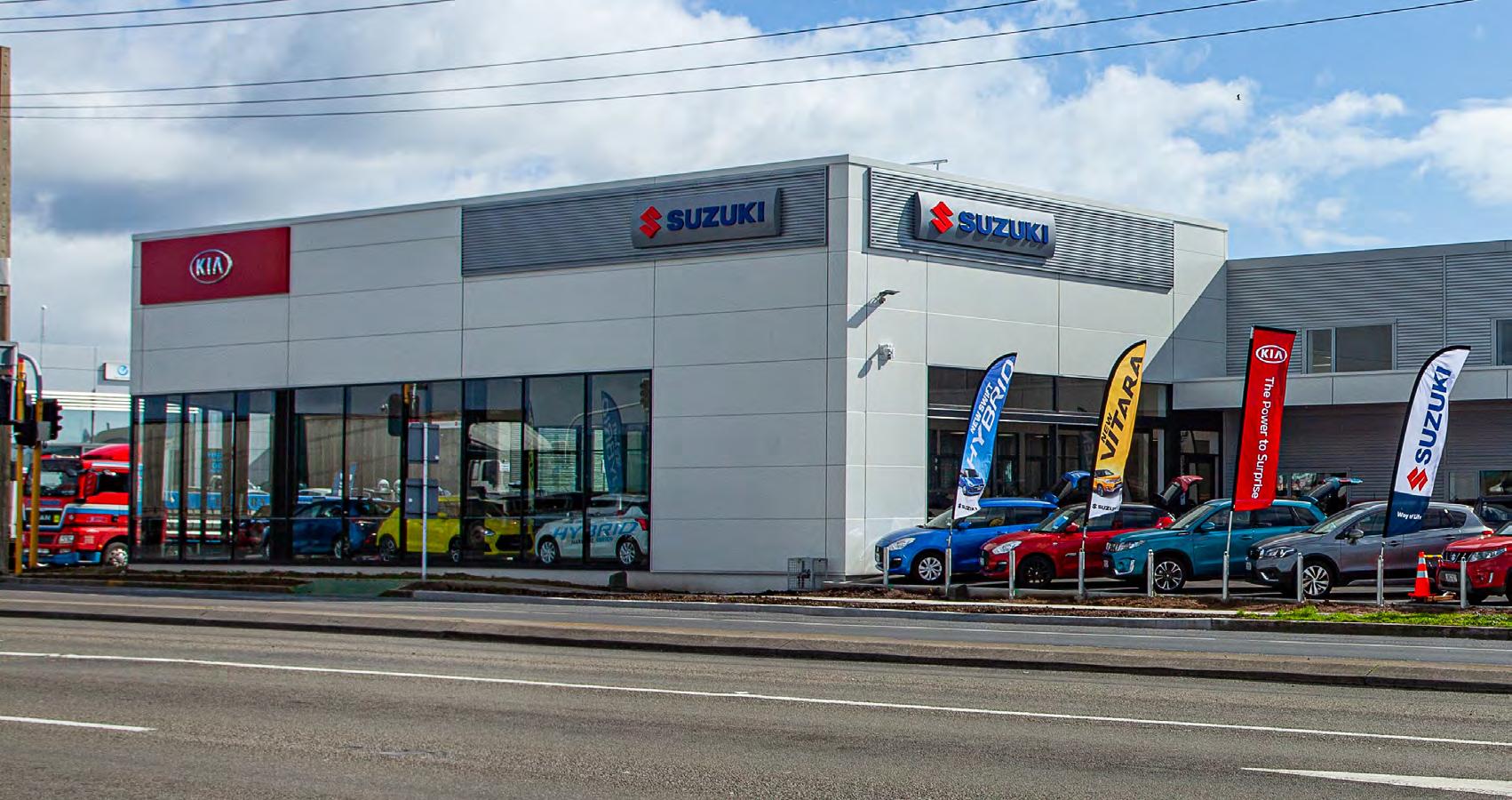
From page 12
Commercial, Industrial, Office and Residential Building Washing
We can provide you with a customised programme, our services include:
Building Washing (Commercial/ Industrial/Office/Residential)
Roof Washing
Gutter Cleaning
Window Washing
Moss, Mould, Lichen, Grime, Oil and Stain removal
Coresteel works on a range of different building types and sectors – including Industrial and Commercial.
Strong new vehicle growth
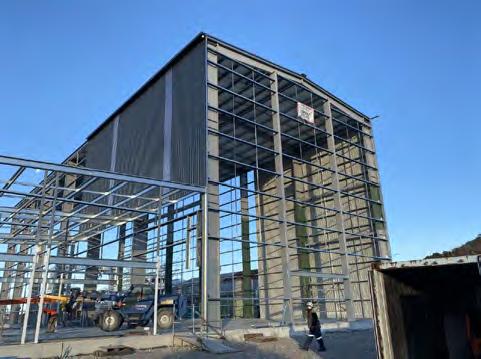
Grime Off Now can offer you a tailored programme for the maintainence and presentation of your building to ensure your business is presented in the best possible way. ‘Improving
Bug and Pest Control management programmes
Fogging – Sanitizing
Hot water washes – Car parks, Pavements and Driveways
High Level – Atrium Dusting
Call us today for a quote

Contact Roger on 0274 994 237 to see what we can do for you. Email roger@grimeoff.co.nz Web grimeoff.co.nz
Tauranga Motor Company’s Mark Jury said a key reason why the new premises were needed was simply to get more space, not just to display vehicles, but create a better experience for customers. That included more space for clients to park and more easily experience the dealership.
“The new site allows for access to both Maru St and Hewletts Rd and easy, stressfree parking,” he said, adding that there were several reasons for moving to Hewletts Road – noted in Tauranga as “the car zone”.
“Part of it was being able
to secure a big enough site to fit the size of showrooms in particular that we required,” he said.
“The objective was to give us as much space as possible for bigger showrooms than we might have otherwise achieved. That way we could have more cars inside. We are first and foremost a new car business. We want to give them the best impact we can and put resources into new car
display.”
Car sales in New Zealand also tended to be very weather-dependent, so with the new premises potential clients could browse regardless of the conditions, said Jury.
“They can look at a car and be insulated from outside, which makes for a much better environment. The cars can be kept cleaner, and inside you reduce the noise. That was important to us and fol-


lows a bit of a lead from what is happening overseas.”
Jury said the new build had gone reasonably smoothly.
“Like any build it’s had its headaches, but we’ve worked together with Coresteel and overcome them as they have come up. Obviously Covid-19 was completely unexpected. We just all worked together on that and came through it very well. I’m really proud of the final result.”
Strong new vehicles sales post lockdown
Jury said that Tauranga had experienced strong new vehicle sales subsequent to the L4 lockdown.
“We are quite confident at this point that our brands will do well in the market,” he said.
The company’s brands have been strong performers, with for example, Kia currently number one in the Tauranga market for passenger vehicle and SUV sales.
Jury said he thought there were a number of reasons for the uptick in sales. They included the fact that many customers who had put away money for overseas travel, were no long using it for that purpose. “There’s also a desire if you are going to spend more
well and everything else follows.” – Simon Eireling
time travelling within New Zealand then you’re probably going to want to do it in a quality car,” said Jury.
“If you’re not going to be flying, you’re going to tend to look for a good safe car that isn’t going to let you down,” he said. “People are upgrading their cars because they’re going to be using their cars more. They are looking at their car as something they need to have functioning well for them.”
Jury also noted that there had been an upswing in financing, with interest rates at historic lows.
“In the Covid 19 environment it is impossible to be 100 percent sure what will happen,” he said.
“But we have a high degree of confidence in our brands, which have proven to be resilient and we have quite a bit of good news ahead in terms of new models coming.”


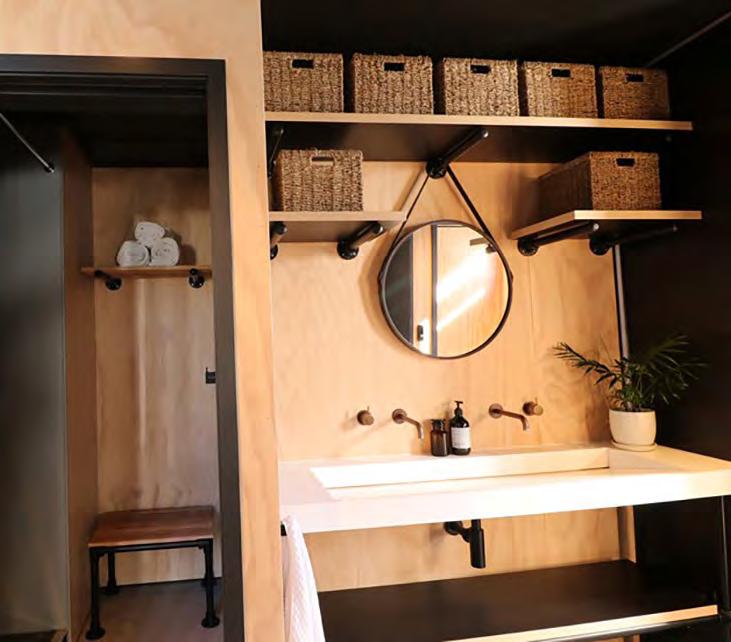


Owner Matt Paget has an excellent reputation regarding civil projects. He knows how to manage council requirements and create design solutions.
The MATCO team deliver high levels of workmanship with an emphasis on safety, while juggling the requirements of multiple stakeholders.
They can streamline their
work to help keep a project on time and within budget.
Their teams experience, capability and can-do attitude allows them to come up with tailor made solutions for their clients.
MATCO pride themselves on providing a flexible, approachable and friendly service with a team that’s always willing to go the extra mile.
From port work to palm
MATCO are regularly working on small and large civil projects throughout the wider Bay of Plenty, Coromandel, Taupo and Waikato regions.
kernel, big jobs or small, their team are there to assist you achieve positive outcomes for your business safely, professionally and on time.
From drainage and earthworks to retaining walls, carparks, subdivisions, surfacing and cartage the MATCO team have the expertise and equipment to manage all your residential and commercial needs.
At MATCO they are committed to keeping abreast of the latest technological advancements in the construction industry. They actively utilise these tools to deliver the productivity and value for money their clients have come to expect from them.
MATCO’s fleet of modern CAT 313FL excavators are
equipped with CAT Grade control 2D depth and slope positioning.
This provides their operators with real time bucket tip elevation guidance for flat or sloping plains – meaning they can provide a faster, more accurate final trim finish for their clients.
Their CAT 289D tracked skid steer is equipped with the SHARP GRADE precision laser leveller system – pro-


viding a quick setup and an extremely accurate final trim solution for your project.
If you have a project that requires an experienced and passionate team, give us a call today and we can discuss how we can apply our expertise, knowledge and top-notch machinery to the work required.
Phone 0800 4 MATCO (62826) or 07 572 0605 or email admin@matcocontractors.co.nz

According to a survey by Digital Identity New Zealand (DINZ) in 2019, 79 percent of New Zealanders were concerned about the protection of their identity and use of personal data by organisations. The updated Privacy Act 2020 comes into force in December, but do you know what it means for you and your business?
Aotearoa New Zealand has had a Privacy Act since 1993. It was introduced to promote and protect individual privacy; to establish principles on collection, use, and disclosure of information relating to individuals; and access by individuals to information held about them.
In the 27 years since the Act became law we have seen an explosion in the use of technology in the workplace and in the home, and with it the amount of information being requested by agencies to allow us to sign up to services and transact online.
Advances in technology means that data can be stored in one part of the world and accessed from anywhere else on the planet provided you have a simple device and access to the internet.
Data is the new currency
Your data has huge value to organisations across the globe
and people pay a lot of money to get access to it. Government is one of the biggest producers of data (and one of the few major producers that deliver data to the public free of charge).
Most major companies use the data they collect from their users to drive the insights that improve their services; or they take that data and sell it to a third party as advertising revenue (remember: always read the Terms and Conditions before signing up)
With this proliferation of data reservoirs across the world, countries have been putting measures into place to try to bring ownership and control of this data back to individuals. In 2018 the European Union introduced the General Data Protection Regulation (GDPR) and, closer to home, Australia’s privacy act was introduced in 1988 with significant amendments in 2013 and 2017.
The change in our own legislation this year is bringing us into line and making organisations, both here and overseas, more accountable for protecting your data, making it accessible to you upon request, only recording the information about you they need, and being transparent when there are data breaches that affect you and others.
The new act has clarified that businesses and organisations can only collect identifying information if it is necessary – if you don’t need it, don’t collect it.
Mandatory breach notifications have been introduced.

> BY TONY SNOW
Hacking attempts and cyber attacks are now commonplace, and there are a number of notable examples where organisations or businesses have accidentally lost customer information.
Under the new Act if you have a serious privacy breach you must inform The Privacy Commissioner and those individuals affected by the breach. Failure to do so may result in some hefty penalties.
The new act is also more explicit around overseas organisations that conduct business in New Zealand. Think
The new act has clarified that businesses and organisations can only collect identifying information if it is necessary –if you don’t need it, don’t collect it.”
Facebook, Google, Apple, Microsoft etc.
If you are using a cloudbased provider to store your data, and there is a breach, they could be accountable under the new Privacy Act; however it would be up to the individual to notify the Privacy Commissioner.
It is imperative for organisations that are collecting and keeping data on individuals to be safe and secure. If a breach occurs, it is up to the organisation to prove that they took all steps practicable to prevent the breach and to show what it is doing to prevent repeat occurrences.
This does not just relate to the technology breaches: if you have someone in your place of work and you have another person’s details up on the screen or on your desk or open to public view – this can be considered a breach.
Compliance steps
As a business, if you are holding data, it would pay to jump on to the Office of Privacy Commissioner website https:// elearning.privacy.org.nz/ where you will find a range of educational tools about the Privacy Act 2020. As a nation we have returned time and again to the touchpoint of identity as taonga, recognising that personal information is to be treasured and treated with dignity and respect.
Organisations which genuinely promote and respect individual and community information will be the success stories of the future. Speak to your legal and tech advisers to ensure that you understand all the implications and are ready to implement and be part of this digital change with minimal disruption to your business.
There’s no shortage of great ideas in New Zealand. But for an innovative bunch, we’re not the best at realising the full potential of our innovations, particularly when exporting them.
At James & Wells, we can identify your competitive edge, offer business strategies for specific markets and help you own and leverage your intellectual property to ensure no one steals the fruit of your labour.
Rotorua’s Damar Industries has launched a brand of hand sanitisers and related sanitising products and aims to produce up to a million litres a month to meet the demand for what has become an essential product and to future proof local supply.
BY DAVID PORTER
Damar Industries is the country’s largest manufacturer of ethanol-based consumer products and has decided to broaden its production in the face of surging customer demand for sanitiser and other cleaning products.
It will sell the sanitiser under the brand name SaniHero. This is an entirely new category for 36-year-old family owned New Zealand business.
Damar Industries has grown from a paint and varnish company working out of a cowshed, into New Zealand’s largest manufacturer of coatings, chemicals and aerosols.
Currently most sanitisers are made offshore and imported into New Zealand.
“During the early days of Covid-19 we saw widespread out of stock situations and it was clear that the reliance on imported sanitiser is a risk
to individuals, our frontline workers and our wider medical services,” said Scott Thomson, founding director of Damar Industries.
“The lack of supply of an essential product is untenable and left many people exposed and pressured into paying vastly inflated prices.
“We believe Kiwis deserve to have access to products they need to keep them safe and we are absolutely committed to helping them do this.
Supporting local business
Thompson said the SaniHero launch not only enabled the retail and health sector to break the dependence on the international supply chain for an essential item, but it also supported local business efforts and more jobs for Kiwis.
“Our chemists and laboratory have developed a superior sanitiser which has been proven to kill 99.99% of germs

and our Rotorua plant can easily produce sanitiser since it falls into our current area of expertise,” said Thompson.
“In the longer term, we will be developing a hospital grade sanitiser to enable our DHB’s to source local as well. Our state-of-the-art plant and automated production lines enable us to produce up to a million litres of superior sanitiser every month. When we are up to full capacity, lack of supply will be a thing of the past for New
Zealand.”
Rotorua mayor Stevie Chadwick said: “It is great to see local businesses using innovation to create new products that will bring jobs into our community when we know that some of our traditional industries are struggling.”
The mayor said the loss of tourists and the cancellation of events would have a severe impact on Rotorua, so the news of a local manufacturer stepping up in this way to grow
local business and employment was especially welcome.
Mitre 10 NZ is the first local retailer to get on board with the Made in New Zealand product. Damar Industries anticipates other retailers will soon follow.
The SaniHero sanitizers are available in a 500ml pump bottle (RRP $9.95) and a 1L refill pouch (RRP $19.95).
A handheld 60ml sanitizer option and an aerosol surface spray are in planning.
Locally owned family business Hawes Building Solutions is celebrating 20 years in business this year. Known for their quality workmanship and excellent service, the Hawes team is behind many high-end commercial and residential design and build projects in the region, and is a trusted name in the Bay.
The company was founded by Mark Hawes in 2000, with his brother Anthony joining him a few years later after returning from the UK. Mark has been in the building industry for 28 years, and Anthony for more than 30. They have worked on many interesting projects over the years, such as the 1750m2 Cameron Road retail complex development and the 12th Avenue retail development which houses Westpac Bank plus other retail and office spaces.
Their latest design and build project, due for completion later this year, is for Easy Gate in Tauriko. In collaboration with Kirk Roberts Engineers, Hawes has provided a cutting-edge solution for this client’s new offices, powder coating plant, and warehouse space.
“We spent plenty of time talking with Easy Gate to understand their business and help them achieve an innovative design solution that suited their needs.
“Early contractor involvement had many advantages, and we’ve made significant changes to their preliminary design to provide a more cost effective and fit for pur-
pose building,” Anthony explains. We chose a concrete structure to mitigate noise and fire protection concerns and to simplify the construction process. A bespoke steel frame and roof system were also introduced to create a dust free environment.
“We improved the look of the building and its longevity by proposing decorative precast panels and prefinished low maintenance roofing and joinery components. The interior has been specifically designed to meet the client’s operational requirements while allowing flexibility for future expansion,” Anthony says.
Hawes Building Solutions has strong systems in place that ensure an easy process for their clients.
With Mark in the role as Projects and Construction Manager and Anthony as Quantity Surveyor, their skills seamlessly complement each other. They lead a team of 20 which includes another Quantity Surveyor, a Registered Architect, Senior Site Managers, Carpenters, Hammerhands and Apprentices, as well as Chartered Accountant Suzanne Jansen who manages the office.



“We are proud of our team and enjoy partnering with leading architects and designers in the Bay of Plenty and Waikato to produce long lasting, high quality buildings” says Mark.
Next to bespoke commercial and industrial buildings, Hawes Building Solutions also excels at residential design and build projects such as high-end new builds, major home renovations, and often complex leaky home remediations. They can organise the entire building process, from drawing up plans and dealing with council consents through to the finishing touches.
This team of highly experienced certified builders work together well, and are passionate about detailed planning and flawless executions.
To find out more, call Hawes Building Solutions on 07 578 2414, visit them at their Glenlyon Ave office in Greerton or online at www.hawes.build.


In my last article I wrote about the importance of doing thorough due diligence on any business or asset acquisition. I recommended drawing up a list of due diligence issues, including identifying and verifying ownership of all intellectual property (IP) assets.
With this article I explore a related issue
– the risk of IP rights being bona vacantia after a business’s assets have been sold. Bona vacantia is Latin and means “unclaimed goods”.
More broadly, it means unclaimed property. “Property” includes intangible assets like trade marks, patents, copyright, trade secrets and designs.*
The issue of IP assets being bona vacantia most commonly arises in relation to registered IP rights.
When does bona vacantia apply?
Property owned by a company (limited or unlimited) is deemed to be bona vacantia if, immediately before the company is removed from the New Zealand Companies Register (the “Register”), the property has not been distributed or disclaimed by the company. (In
the context of IP rights, “distributed” means assigned by way of deed or otherwise in writing to a new owner; “disclaimed” means withdrawn, cancelled or surrendered.)
On removal of the company from the Register, ownership rights in the property vest in –pass to – the Crown.
The Crown takes ownership of the property because the company no longer exists as a legal person and under New Zealand law the property must be owned by someone –it cannot remain ownerless.
By way of example, if ABC Limited owns a registered trade mark, but does not assign or cancel the registration before the company is removed from the Register, the Crown will become the owner of that registration on removal of the company from the Register. Similarly, if XYZ New Zealand (an unlimited company) owns a granted patent, but does not assign or surren-
der the patent before the company is removed from the Register, the Crown will become the owner of that patent on removal of the company from the Register.
Can you get your property back?
If property does vest in the Crown, all is not lost. Property can be recovered by a person “who would have been entitled to receive all or part of the property, or payment from the proceeds of its realisation, if it had been in the hands of the company immediately before the removal of the company from the New Zealand register”.
The recovery process is not a simple one, however, and may involve restoring a company to the Register. (I say “may” because for registered trade marks at least, entitled persons can pursue a private process directly with the Trea-

> BY BEN CAIN
Ben Cain is a Senior Associate at James & Wells and a Resolution Institute-accredited mediator. He can be contacted at 07 928 4470 (Tauranga), 07 957 5660 (Hamilton), and benc@jaws.co.nz.
sury, which does not involve restoring the company to the Register.)
If the company is restored to the Register, then, subject to certain exceptions, any property vested in the Crown re-vests in the company as if the company had not been removed from the Register.
This ‘restoration without interruption of right’ can be pivotal in retaining and enforcing IP rights – as a trade mark owner in England found out recently.
In Fit Kitchen Ltd & Anor v Scratch Meals Ltd,** the plaintiff, Fit Kitchen Limited (“FKL”) successfully sued the defendant, Scratch Meals Limited (“SML”), for trade mark infringement and passing off. A key feature of the case was whether the trade mark relied on by FKL was valid.
FKL applied to register its FIT KITCHEN logo trade mark (“Trade Mark”) on 8 August 2016.
Unbeknownst to its director at the time, the application was made six days after FKL had been removed from the UK’s Companies Register for failing to file its annual accounts. The failure was due to an address mix-up.
On discovering the company had been removed, FKL’s
director applied to restore the company to the Register; the company was duly restored on 11 December 2017.
In December 2016, while FKL was not on the Companies Register, however, SML began using a similar FIT KITCHEN logo mark; it did so until November 2019.
1. In infringement proceedings brought by FKL in the Intellectual Property Enterprise Court, SML argued, among other things, that FKL’s trade mark registration was invalid because on the date FKL applied to register its trade mark it was a dissolved company, and a dissolved company cannot apply for a trade mark. Much to FKL’s relief, the Court disagreed. Applying very similar law to that in New Zealand, the Court found that as FKL was deemed to have continued in existence at all times, including on 8 August, 2016, the trade mark application was properly made by FKL and the Trade Mark belonged to FKL.
Take homes
To avoid a significant headache, all companies with IP assets should ensure:
1. The company’s details on the Companies Register are correct;
2. The company keeps a detailed register of all its IP assets, whether registered/ granted or not;
3. The company’s contact details for any IP assets on the Intellectual Property Office of New Zealand database (and any other databases, including domain name registrars) are correct;
4. If the company has an IP agent, the agent has up-todate contact details for the company; and
5. If the directors and shareholders of the company intend to wind the company up, then in preparation for removal from the Companies Register, all IP assets are assigned in the proper fashion to a new owner/new owners before removal. If any readers of this article require specific advice, or know someone who does, then contact James & Wells or your nominated IP attorney. Don’t leave it until it is too late.
• References:
* See the definition of “property” in section 2 of the Companies Act 1993. ** [2020] EWHC 2069 (IPEC).















When is the right time to sell your business? Right now.
At TABAK, we promise to guide you through the sales process with focus, integrity and complete confidentiality.








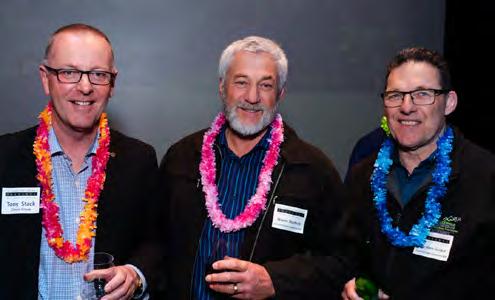






1 3 6 8 10 2 4 7 9 11 5
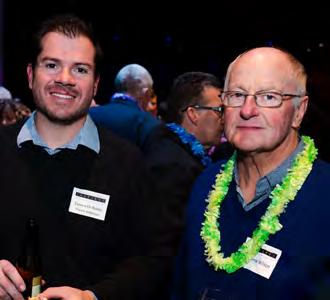



In the more than 100 disputes tribunal hearings that I have been involved in as a support person for my clients, a huge number of them have one common denominator, the mishandling of expectation management.
When a private client engages a professional service –whether that be in the trades, IT services, automotive, hospitality, legal or any other industry – they are generally not engaging with the provider as an expert in that industry. This means that any expectation that they have regarding the provision of the requested service is usually based on their limited exposure to it in the past.
There is a real balance to be found in setting an expectation. It must be high enough to attract customers, but realistic enough that you minimise the chance of disappointing the client, which can lead to non-payment, disputes and damage to the supplier’s reputation.
In my experience with larger businesses, the issues are often found in a disconnect between sales and production. Sales people under pressure to
hit targets and be the quarter’s sales champion can sometimes oversell the business’s ability and then hand the problematic baby over to the production teams to manage.
An example of this was at an electronics company I worked with. The sales person

money they were spending on toner, as such departments have fixed budgets that are set a year in advance. Doing some basic model research, the sales person found a model that had a toner yield of 6000 pages and put together the proposal focusing on the high yield as a

[Expectations] must be high enough to attract customers, but realistic enough that you minimise the chance of disappointing the client, which can lead to non-payment, disputes and damage to the supplier’s reputation.”
did a proposal to a large government department’s investigations department. They needed 10x high resolution machines and their main pain point was the amount of
major selling point. It worked and the department issued a purchase order for $270,000.
The technicians installed all 10 machines, removed and destroyed the old machines
> BY NICK KERR
Nick Kerr is Area Manager BOP for EC Credit Control NZ Ltd. He is also a director of International Private Investigations Ltd. Nick can be reached at nick.kerr@eccreditcontrol.co.nz
(as security protocol dictated), updated all drivers and printing software and conducted around 20 hours of training with key staff. One month later, the complaints and service calls started rolling in as the toner was running out even faster than the previous machines, averaging 400 pages per set rather than the 6000 as quoted.
After many heated phone calls from the client to the service manager, the sales person was called into a “please explain” meeting. After an investigation it was discovered that the 6000 yield quoted was based on a 5 percent page
coverage, but the department in question was in charge of building inspections and the reports that they were printing were full of high resolution colour photos that averaged 80 percent coverage. The machines were returned, sold as used items for a massive loss, the company absorbed the $20,000 training and installation expenses, the sales person was given the opportunity to work somewhere else and the brand suffered huge brand damage in the governmental supply community. This could have all been avoided with the sales person asking for a sample report, giv-
ing it to the technical manager and researching the client’s needs fully.
The basic lesson is that it is better to give people good surprises than bad ones. I have never heard anyone complain that their house was completed a week faster than they thought it was, or that their car engine fault turned out to be easier and cheaper to fix than initially anticipated. Spending a little extra time educating the customer at the start of the process is a heck of a lot easier and cheaper than arguing with them at the end when they are trying to collect on the invoice. Just a thought.

At Bayleys, we believe relationships are what businesses are built on and how they succeed. We understand that to maximise the return on your property you need: Professional property management
A business partner that understands your views and goals
Contact the Bayleys Commercial Property Management team today.

How many times have you watched a TV news item and felt like the interviewee was just reeling off a sales pitch?

All too often people get caught up in their key messages and forget to answer the questions being put to them. They come across as robotic or evasive and their story fails to resonate.
Authenticity matters when it comes to media interviews, and that can sometimes mean diverging from the script a little to let your personality show.
That’s not to say you shouldn’t prepare and consider the most important points you want to get across – that’s critical – but the media, and its audience, wants a human story.
On message, not scripted
One of the first pieces of advice you will hear about preparing for a media interview is to know your key messages. This is interview preparation 101 and it’s important.
However, what is sometimes misunderstood is that most key messages do not need to be recited word for word. So long as the meaning is communicated, you will likely have achieved what you set out to do.
There are of course excep-
When planning this article, we sat down as a team to discuss the current state of the employment climate and how when speaking with most of our clients recently, the general consensus was that things were generally back to business as usual. For some sectors, such as those in the home renovation market, business could even be described as more buoyant than ever.

> BY KELLIE HAMLETT
Kellie Hamlett is Director and Recruitment & HR Specialist, Talent ID Recruitment Ltd. She can be contacted on kellie@talentid.co.nz
hat a difference a few days can make. As I sat down to write, only 24 hours later, Auckland had been plunged back into level 3 lockdown, with the rest of the country at level 2 – what will this mean for business? Have we all become too complacent?
Last week, Stats NZ released the Household Labour Force Survey for the June quarter showing New Zealand’s seasonally adjusted unemployment rate had fallen from 4.2 percent to 4 percent, to the surprise of many. While this lower rate seems like fan-
tastic news on the surface, it doesn’t necessarily portray the whole picture. To be counted as unemployed, a person must not have a job, have been actively seeking work in the last four weeks, or be due to start a new job in the next four weeks. This means that people who weren’t actively seeking work weren’t counted as unemployed in the survey, including those on the wage subsidy who weren’t being utilised in actual work. These people were captured in the underutilisation rate, which has increased from 10.4 percent to 12 percent. Because the unemployment
figures do not include those still on the wage subsidy, but not actually working, we’re likely to see unemployment increase as more people move from under-utilised to officially unemployed once the latest wage subsidy extension ends in September.
Many businesses have seen a surge in spending and retail activity through the June quarter, which is possibly a result of pent-up demand from lockdown.
Recent surveys have also shown that New Zealanders plan to spend more on domestic travel and home ren-
> BY JAMES HEFFIELD
Director of Bay of Plenty marketing and PR consultancy Last Word. To find out more visit lastwordmedia.co.nz or email james@lastwordmedia.co.nz.
tions when precise wording matters, such as when you’re speaking about something that is before the courts or communicating the specifics of a road closure, but in most cases it’s the effect that is important, rather than the precise delivery.
It can also be useful to develop talking points when preparing for a media interview. These can cover additional points or interesting titbits of information that can add substance or colour.
For example, if you are discussing the expansion of a gold mine, it can be helpful to know the year mining began in an area, and perhaps even the name of the first miner who set foot in them there hills.
Bring the human factor
It can be strange to see the way some people change when they are in front of a journalist. It’s true that you need to consider what you say, but overthinking can lead to a stilted or stuttering performance.
It’s ok to laugh, smile and to let a few of your quirks shine through. During a recent story I pitched to a major tele-
vision news programme, the journalist made the point that they were keen to talk to my client’s workers, not just the managers.
In their words, “a bit of a character with a cheeky laugh and a story to tell” was desirable over the boss of the business reciting marketing lines.
In the end, there was a place for both – the manager adding the detail and the worker adding the colour – but it was a good reminder about what really matters for viewers who have settled in to watch the news or current affairs at the end of a long day.
Keep in mind that there may of course be times when smiling and laughing aren’t appropriate, such as when covering a health and safety incident or sensitive topic.
Set the scene
Last, but not least, consider the setting and any “props” you might want to have on hand.
Will you do the interview in your office or reception area, or will you suggest it is done in a setting that directly relates to the subject matter of the story?
A story about conservation
might be done in a scenic area outdoors where the chatter of birds can be heard in the background. A construction story might be done on the site where the project is taking place.
Often the location will be proposed by the journalist, but it’s always good to have some ideas of your own on hand if you feel they could add value. When it comes to props, marketing banners and product placement is ok if done subtly, but you will lose credibility if they are too in your face and come across as a direct sell.
Far better is something that relates directly for a story – a dog might make sense in a story about animal welfare, for example.
Remember that the aim of the props you bring or the setting you propose is to reinforce the message. It should make your story memorable or give it a point of difference when pitching to media.
Adding some personality can be the difference between your story being remembered or not, so don’t be afraid to let yours shine through.

One thing we know for sure is that we’re in unpredictable times. While Covid-19 still remains a threat, we’re likely to continue to be in a state of flux and it is important that we remember not to become too complacent.”
ovations, which is why we’re seeing many of our clients in those sectors performing better than expected. There have certainly been some positive
stories out there in the business community. But with the realisation that community transmission is back, where to from here? One

thing we know for sure is that we’re in unpredictable times. While Covid-19 still remains a threat, we’re likely to continue to be in a state of flux and it is important that we remember not to become too complacent. Continue to review your business continuity and contingency plans and to keep open communication with your staff. Hopefully we continue to apply the learnings from earlier in the year around adaptability and flexibility in the workplace and make any future transition between levels easier on ourselves and our staff.

FOSTER GROUP PROVIDES WHOLE OF LIFE PROPERTY SOLUTIONS FOR BUSINESSES AND COMMUNITIES AROUND THE WAIKATO AND BAY OF PLENTY.
Great communities are built and protected by construction companies who have a commitment to operating sustainably.
Since 2007, Fosters has been a member of the of the Enviromark programme.
The main objectives of the programme are to assist businesses to reduce energy consumption, minimise waste, water and resource use where possible, effectively reducing the environmental impact of the business and contributing to a more sustainable future for New Zealand.
This year, Fosters has achieved Toitu Enviromark Diamond certification – the highest level reflecting ISO45001 standard. Fosters are New Zealand’s only construction company to achieve this certification, and we are proud of this achievement, and the team that got us there.
But the sustainability journey continues. Fosters are moving into the carbon reduce programme with Toitu to make sure our business carbon footprint is the most efficient it can be, while still delivering outstanding construction outcomes for our clients and community.
Our clients care about sustainability and want to do the right thing. Fosters supports clients through ensuring sustainability principles are integrated through the design, construction and building maintenance process.
Protection of our people, our environment and our community provide a strong foundation for a long term business here in the Waikato and Bay of Plenty.

"Immediately impressed us with their professionalism & knowledge"

“An astute knowledge of modern marketing techniques”
“A golden formula that is formidable & exceptionally brilliant"
“We cannot recommend them more highly”
“You will not regret speaking with Oliver Road Estate Agents”
“They are honest, passionate, dedicated professionals”
“Oliver Road has redefined real estate”
“We knew we were in the hands of true professionals”
“Extremely impressed with their knowledge of the market”
"Professional, trustworthy and a delight to deal with”

Jason Eves & Cam Winter


